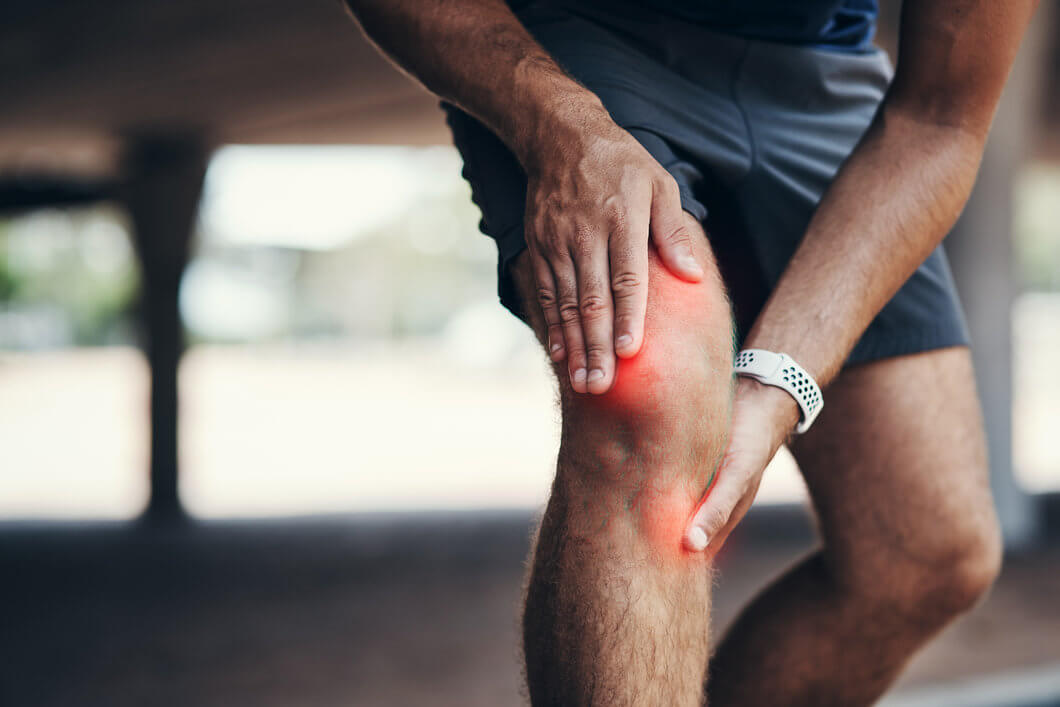Mr Kostas Tsitskaris
Consultant Orthopaedic Surgeon
Specialist expertise: Hip Conditions, Knee Conditions, Sports Injuries, Trauma, Orthopaedics, Hip, Knee, Hip Arthroscopy, Knee Arthroscopy, Hip Replacement, Knee Replacement.
Tears of the menisci occur when the meniscus is abnormally loaded in twisting injuries.

The Menisci are two crescent-shaped pads of cartilage in your knee joint and sit between your thigh bone (femur) and your shin bone (tibia). They are there to absorb any shock or impact of your upper leg on your lower leg during activity but play a significant role when playing sports and working out in the gym. They are also loaded during stair climbing or in deep flexion while kneeling. They are also there to help stabilise your knee joint and keep the movements of your knee smooth.
Tears of the menisci occur when the meniscus is abnormally loaded in twisting injuries. In the younger knee this often happens during sport but in an older knee as the meniscus loses its pliability it can occur in routine day to day twists.
Most people usually know when they’ve injured their knee, and some may feel a popping sensation. You may still be able to walk after injuring your knee, but it will gradually become stiff and develop swelling over a day or so. The pain is often described as stabbing and can be well localised to one side of the knee or other along the joint line.
Other symptoms include:
The likelihood of a meniscal tear healing itself without treatment is minimal. Depending on the severity and where the tear is will depend on how your orthopaedic consultant will devise a treatment plan.
Controlling any pain and swelling will be the immediate priority. A treatment plan for this type of injury can consist of anything from physiotherapy to surgery. The tears themselves vary in pattern and site. The age of the patient, the time after the injury and the pattern can make some meniscal tears amenable to repair. For this reason, seeing a surgeon sooner rather than later is advisable. An MRI scan will help your consultant clarify the finer details of the injury, allowing accurate planning of the best treatments for you. A scan will also pick up any secondary or tertiary injury that may be treated but can be masked by the severe symptoms of the primary meniscal tear.
Arthroscopy is a surgical procedure also known as “keyhole” surgery. It is used by surgeons to view a joint area, so any conditions, such as a meniscal tear, can be diagnosed and repaired. Read more about arthroscopy.
We are able to offer Meniscal Tear appointments to paediatric patients aged 12-18. For full information on our paediatrics service, please visit our main Paediatrics page.
Currently selected day
Available consultations
Symptoms
Pain, swelling, Tenderness in the knee joint
Treatments
physiotherapy, keyhole surgery
Paediatrics
We boast a truly integrated team of orthopaedic surgeons, sports medicine physicians, podiatric surgeons, rheumatology specialists, paid medicine consultants and hand therapy specialists. All of these services work together in one place, enabling us to give patients the best care possible.